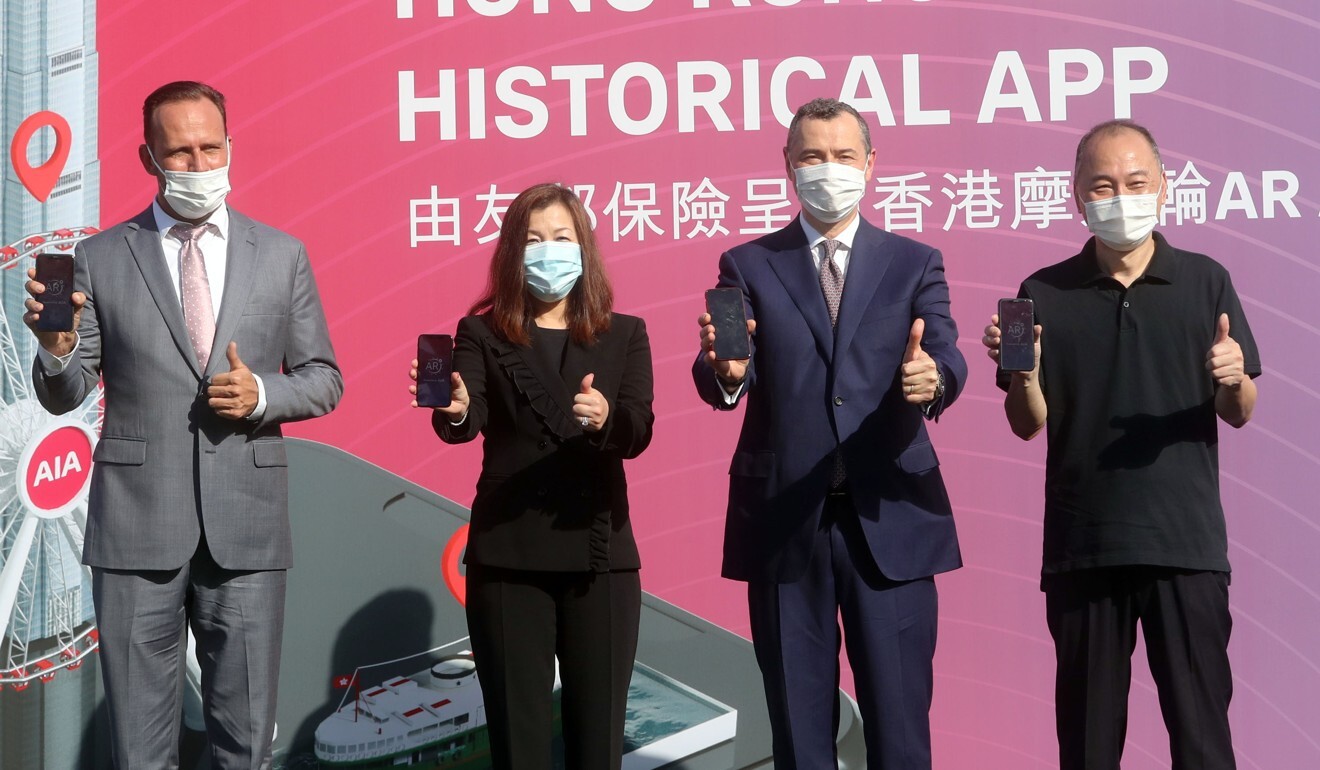
Hong Kong Observation Wheel launches augmented reality app to give visitors a feel of city’s historic past
- Users can download it for free to see the city from two time periods – between 1890 and 1920, and from 1960 to 1980 – during 20-minute ride
- The world’s first-ever augmented reality experience on a moving platform took two years to develop and was guided by city historians Ko Tim-keung and Jason Wordie
The Hong Kong Observation Wheel has launched an augmented reality (AR) app to showcase historic developments of the iconic Central harbourfront dating back to the 1890s.
It aims to encourage locals to rediscover the city while tourism has come to a halt amid the coronavirus pandemic.
Users can download the app for free to see Hong Kong from two time periods – dubbed “Beyond the Beginning” from 1890 to 1920 and “City in Transition” from 1960 to 1980, as they take the 20-minute ride on the wheel.
It is the world’s first-ever AR experience on a moving platform that took two years to develop. The 360-degree visual experience was mapped out with the help of city historians Ko Tim-keung and Jason Wordie.
More than 4 million people have visited the attraction since 2017, according to figures from the Hong Kong Observation Wheel and AIA Vitality Park, which are both operated by The Entertainment Corporation Ltd.

“Bear in mind what has happened since the middle of 2019, in spite of that, we’ve had tremendous ridership,” said Stuart A. Spencer, group chief marketing officer at AIA Group Limited, referring to last year’s anti-government protests and the coronavirus pandemic.
The Hong Kong Observation Wheel, near the Central ferry piers, opened in December 2014 and drew more than 650,000 visitors in the first month.
Its services were suspended for about four months in 2017 during negotiations over the expiring lease on the Central harbourfront with the former operator, Swiss AEX. The attraction was spared the axe that year when The Entertainment Corporation Limited took over its operations. Later, the company partnered with insurance giant AIA Group to run the ride.
Alex Gibbs, commercial director at the Hong Kong Observation Wheel, said the current operator had already extended its lease, which expires every three years, to use the space.
“As long as we’re making it successful and popular here, we know the government is pleased with what we’re doing,” he said.
Mandy Wong, along with her mother, husband and two-year-old son, went on the observation wheel for the first time on Thursday to try out the app.
Hong Kong Observation Wheel to reopen with HK$20 rides, down from HK$100
“For HK$20 (US$2.57), it‘s really worth it. We spent less than HK$100 altogether. We got to see the harbour in a new, fun and historic way. I don’t know why we’ve never been on it before,” she said.
The 60-metre-tall wheel has 42 gondolas, each accommodating up to four people amid the ongoing ban on public gatherings. Tickets cost HK$20 for adults and HK$10 for children aged three to 11 and senior citizens.
Operators of the attraction did not comment on its profitability, but emphasised that making the wheel affordable and accessible was at the core of their success.
“We will continue to invest in making the experience all the more exciting so it becomes even more of a great destination for families in Hong Kong,” AIA’s Spencer said.
Arrivals to Hong Kong remained non-existent in October as only 7,817 people came into the city, a 99.8 per cent year-on-year slump, as non-residents arriving by plane were banned in most cases.
For the first 10 months of the year, city arrivals suffered a 92.9 per cent drop to 3.56 million visitors from more than 50 million during the same period a year ago.

